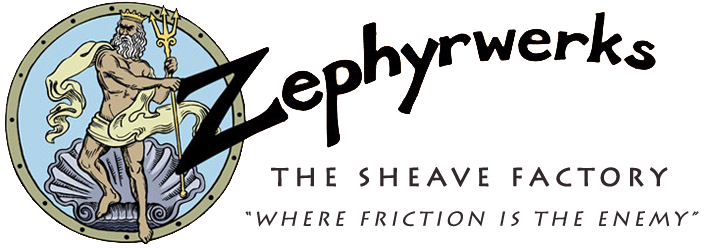What kind of blocks would you install for a self-steering wind vane?This is for a completely different reason. Almost all blocks are much better with bearings. Mast base blocks etc. The mast head sheaves I generally replace with solid self lubricating bronze bearings and better sheaves.
Yves and Eric and the cape horn don't crush the bearings so much as melt them. Most of the bearings in ball bearing blocks are various plastics that can be melted if constantly moving. (Which is generally only the case with self steering loads).
We did a study on these and had blocks made up with differing ball bearing composition from Garhauer. Indeed we melted the standard composition in about 1500 miles of steering, when replaced with higher heat bearings we have sailed over 3000 miles with no problems.
Not mentioned here is the fact that nylon "standard" blocks egg out under load and turn poorly under loads in almost all usages. Yes they are cheap, and they do suffer uv damage and are harder to use under load, but other than that standard nylon blocks are fine for light loads on things rarely used.
Guy
Stainless steel ball-bearing?

